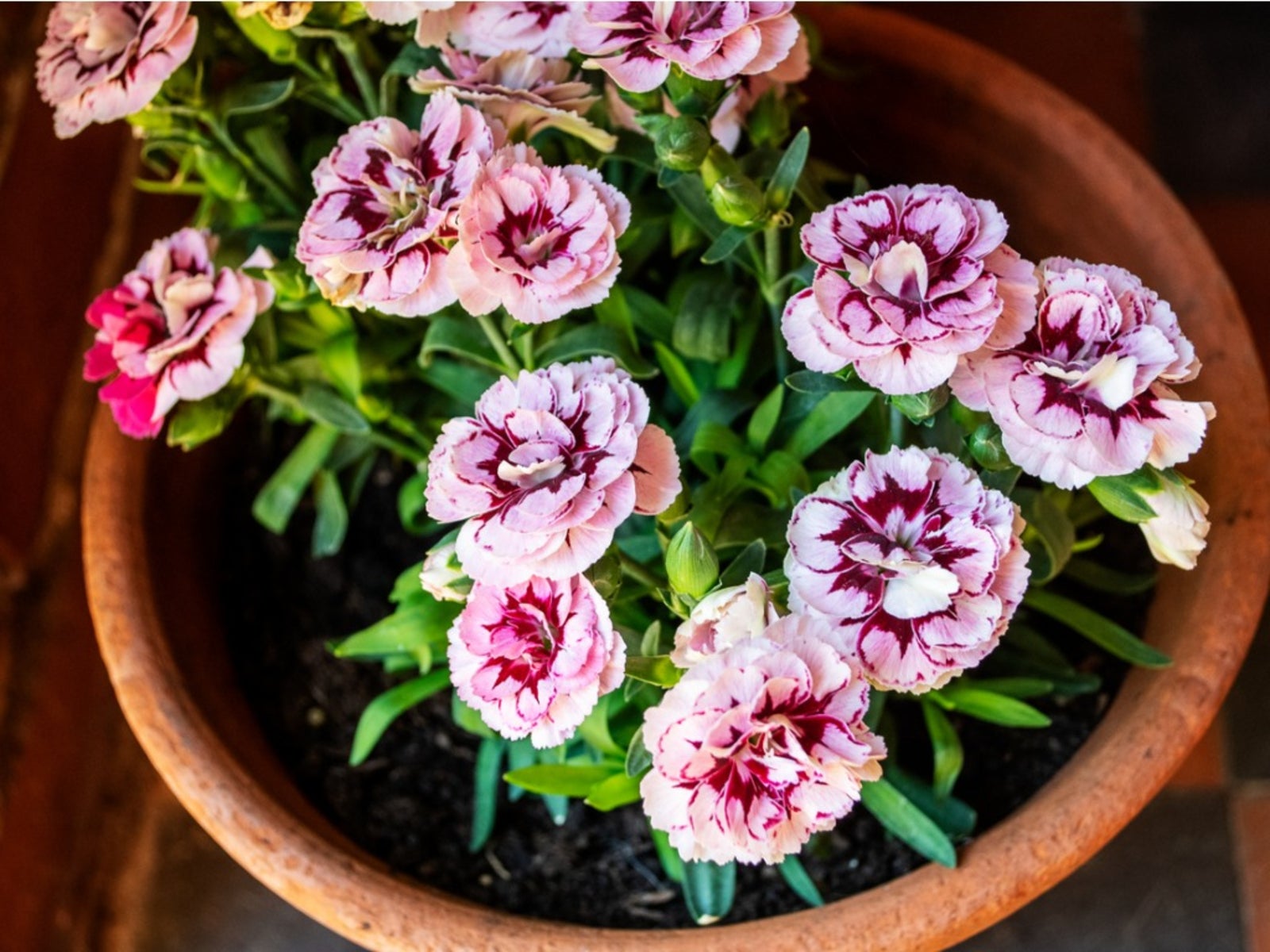Carnation Garden Plants: Tips For Growing Carnations

Carnations date back to ancient Greece and Roman times, and their family name, Dianthus, is Greek for “flower of the gods.” Carnations remain the most popular cut flower, and many people want to know how to grow carnation flowers. These fragrant flowers made their debut in the United States in 1852, and people have been learning how to take care of carnations ever since. Anyone can learn about growing carnations and enjoy the rewards of having beautiful carnation garden plants.
Tips for Planting Carnation Seeds
Successful carnation flowers (Dianthus caryophyllus) begin with planting. Here are some guidelines to keep in mind when growing carnations in the garden.
Pre-Planting Considerations
Proper care of carnations begins before you even plant your seeds. Growing carnations will be much easier if you plant the seeds in an area that gets a minimum of four to five hours of sun each day. Use well-draining soil without using mulch, which could prevent good air circulation. This will help you grow thriving carnation garden plants.
Planting Carnation Seeds Indoors
Six to eight weeks before your area will be frost-free, you can start your carnation seeds indoors. Learning how to grow carnation flowers this way is easy and will promote flowering in the first year so you can enjoy the fruits of your labor by taking care of carnations.
Choose a container with drainage holes in it, filling the container within an inch or two (2.5-5 cm.) from the top with potting soil. Sprinkle the seeds across the top of the soil and cover them lightly. Water until the soil is moist and then wrap the container in a clear plastic bag to create a greenhouse effect.
The beginnings of your carnation garden plants should poke through the soil in two to three days. Move the seedlings to their own pots once they have two to three leaves and transplant them outdoors once they reach a height of 4 to 5 inches (10-13 cm.) and when your area is free of frost risk.
Planting Carnations Seeds Outdoors
Some people would rather learn how to sow carnation flowers outdoors after the threat of frost has passed. Learning how to plant and take care of carnations in an outdoor garden is similar to growing carnations indoors, but it's unlikely that your plants will bloom the first year when the seeds are sown outdoors.
Sign up for the Gardening Know How newsletter today and receive a free copy of our e-book "How to Grow Delicious Tomatoes".
Begin planting carnation seeds outdoors by sowing them in 1/8 inch (3 mm.) deep soil that will drain well. Keep the soil in your garden, or container, moist until the seedlings are growing. Once your seedlings are thriving, thin them so the small plants are 10 to 12 inches (25-31 cm.) apart.
Care of Carnations
Water your growing carnations once each week and encourage strong carnation garden plants by fertilizing them with a 20-10-20 fertilizer. Pinch off the flowers as they become spent to encourage additional blooming. At the end of the flowering season, cut your carnation stems to ground level. Planting carnation seeds once can result in years of beautiful, fragrant flowers.
Mary Ylisela has shared her love of gardening with countless students, ranging in age from 4 to 13 years old. Her gardening experience ranges from caring for her own perennial, annual, and vegetable gardens to teaching students a variety of gardening activities, from planting seeds to creating landscaping plans. Ylisela's favorite thing to grow is sunflowers.